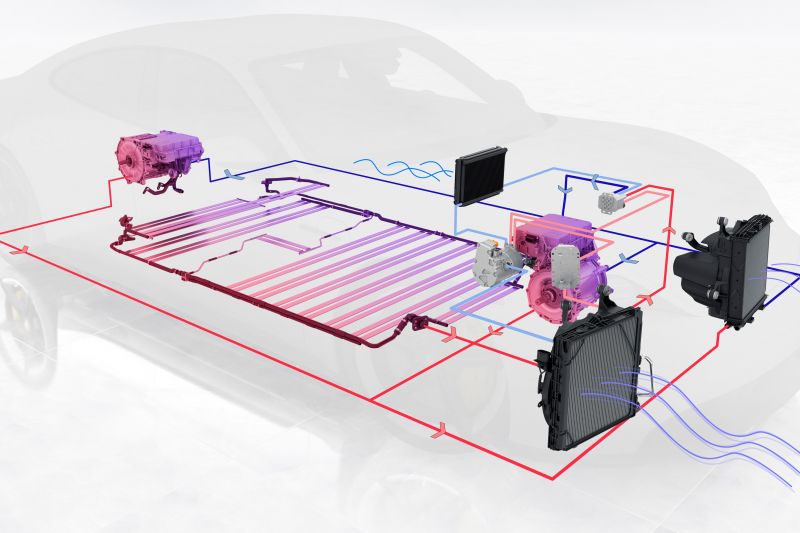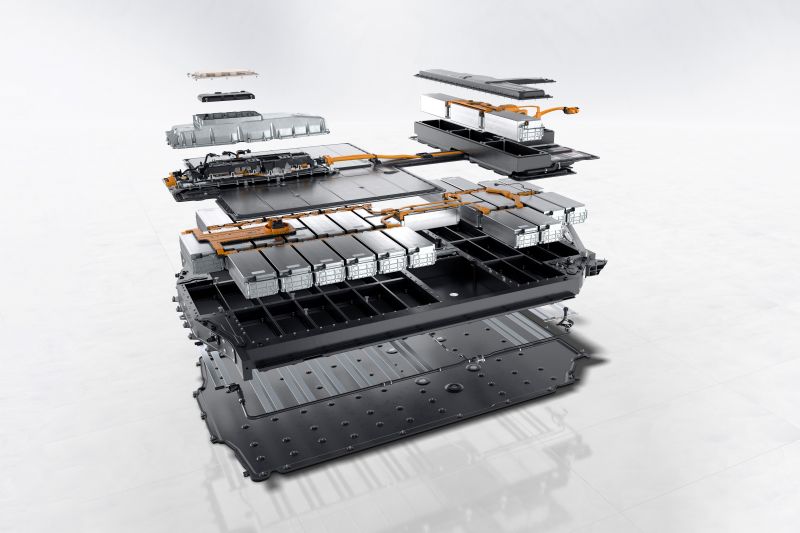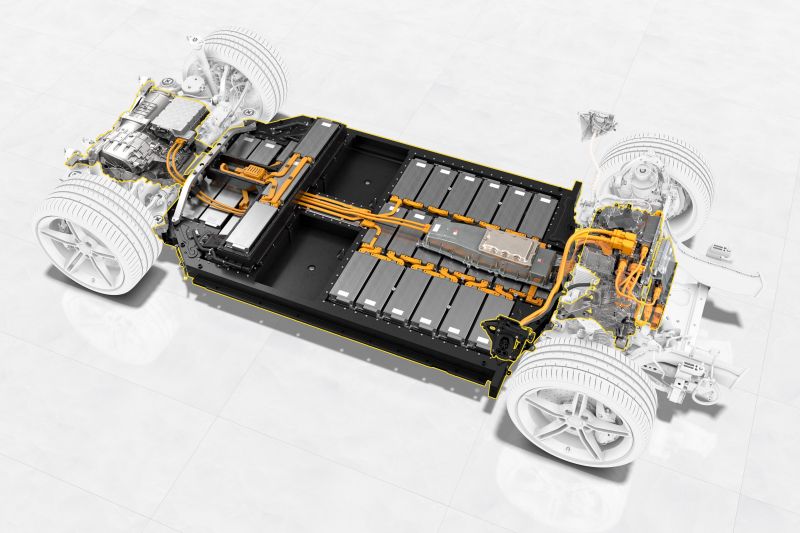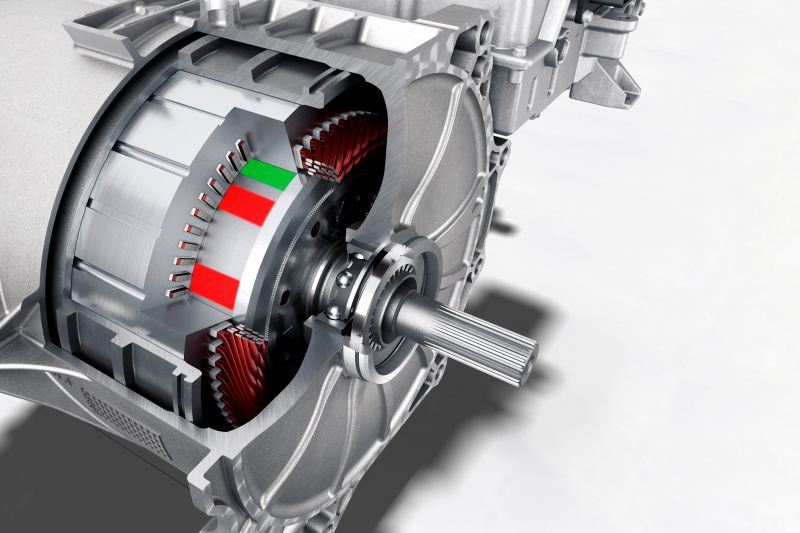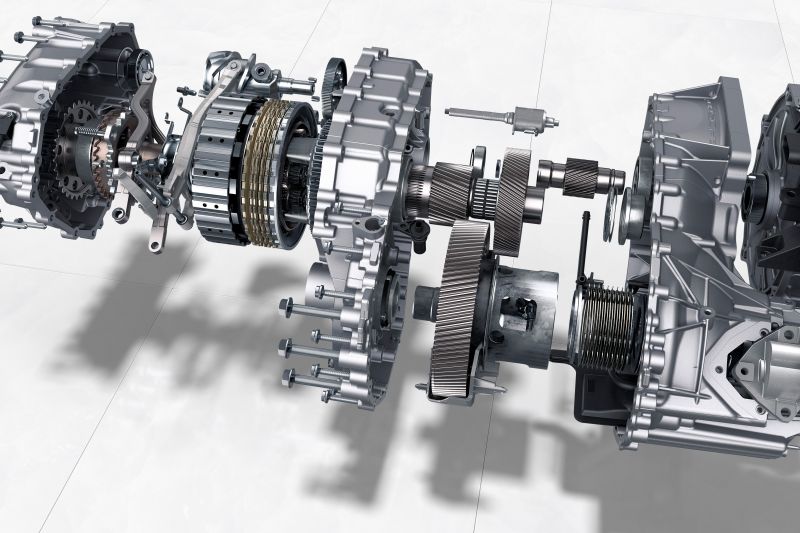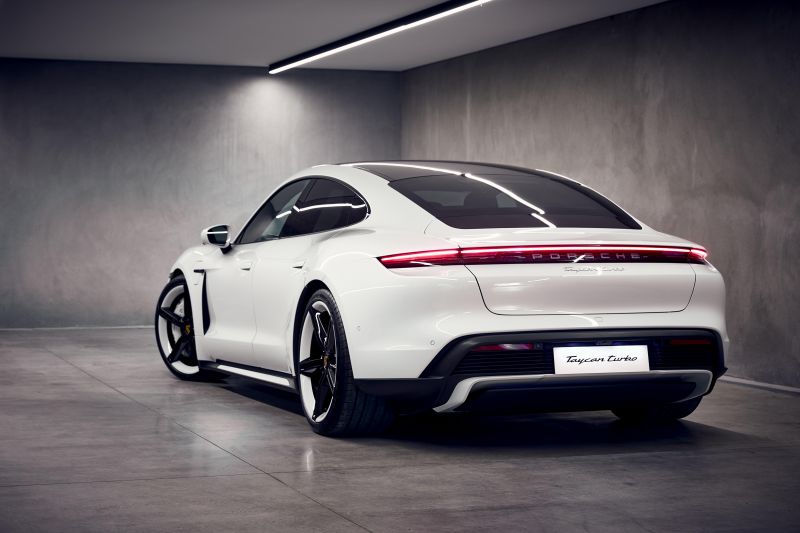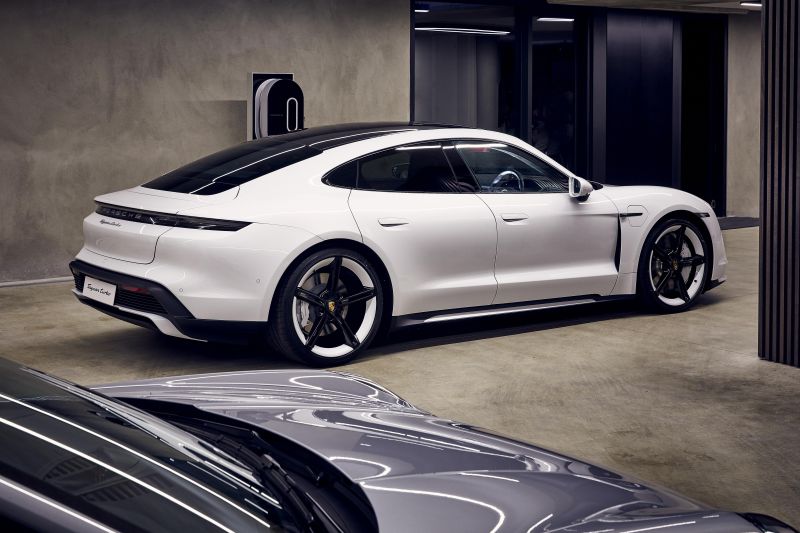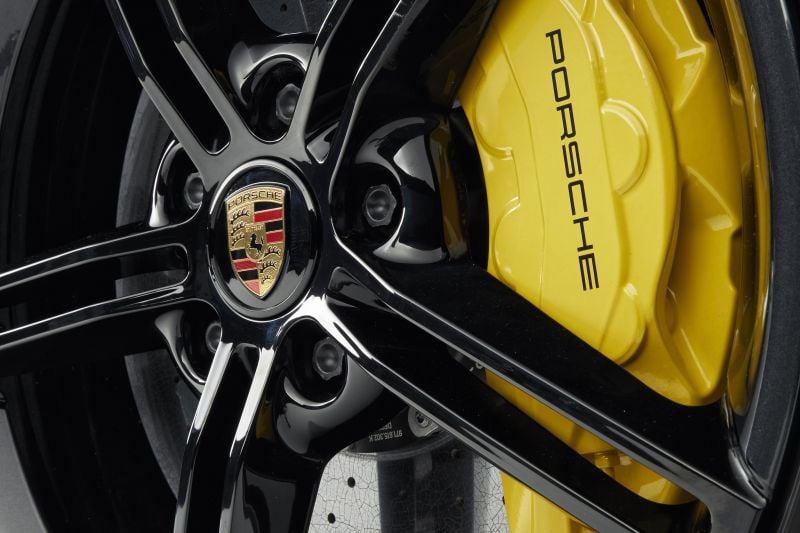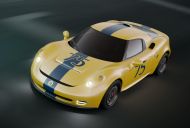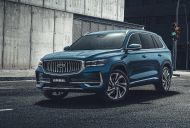The first pure-electric Porsche is coming soon. The Taycan will be touching down in Australia during December this year with three models, starting with the Taycan 4S.
For our full pricing and spec breakdown in Australia, check out our dedicated story. If you want the inside story on how Porsche has engineered the Taycan, read on.
Battery
- 800V: The Taycan is the first production electric car to use an 800V architecture
- 270kW: Plugged into the right kind of fast charger, the Taycan can charge at up to 270kW
- 93.4kWh: The largest battery capacity offered on the Taycan
- 420km: The longest range offered by the Taycan
Usually in a Porsche, we’d start with the engine. But this is a Porsche with a difference.
Under the skin, the Taycan is the first vehicle to use an 800V electrical architecture. The move allows Porsche to charge faster without using thicker, heavier cables.
For those without an engineering background – me included – the importance of going to 800V can be explained by looking how DC power is measured.
Power = Voltage x Current, which means you can increase the amount of power being output in your car by upping the voltage, upping the current, or both.
Although you could improve the current by decreasing resistance with a larger cable, that also adds weight. By shrinking the cable, Porsche argues the increase in resistance created by the smaller cabling in the Taycan isn’t drastic enough to offset the weight savings.
Using its 800V capability, the Taycan can recharge at up to 270kW when hooked up to an ultra-rapid DC fast charger. From empty to full, the car can be charged in around 20 minutes.
However as 800V infrastructure spreads, thermal management technology improves, and Porsche comes to better understand it, there’s talk of using over-the-air updates to allow for 400kW or 500kW fast charging.
When the right kind of charger isn’t available, the Taycan can still charge at 150kW on a DC fast charger, or 11kW when plugged into the included AC home charger.
The car is already clever when it comes to thermal management. If you select a charging station on the satellite navigation, the car will automatically heat or cool the battery pack to make sure it remains in its 30 degrees celsius fast-charge sweet spot.
Also on hand to help recharge the battery is regenerative braking. The Taycan can harvest energy usually wasted as heat or dust when the driver hits the brakes more aggressively than most of its electric rivals – the system can regenerate up to 265kW, to be precise.
For the most part, that means when the driver hits the left-hand pedal it’s not the physical brakes that are slowing the car, it’s the regenerative braking system. That hasn’t stopped Porsche offering carbon ceramic stoppers on the range-topping Taycan Turbo S, of course.
Two battery capacities are offered in the Taycan. The base 4S features a 79.2kWh battery pack good for a claimed 365km of range, but it can be replaced with the 93.4kWh Performance Battery Plus from the Turbo and Turbo S.
With it fitted, the Taycan 4S will cover a claimed 414km. That’s down on the 420km promised by the Turbo, but an improvement on the 405km promised by the range-topping Taycan Turbo S.
Motors
- 600A: The amount of current running through the motor in the Taycan Turbo S
- 1050Nm: Peak torque in the range-topping Taycan Turbo S
- 2.8 seconds: The 100km/h sprint time in the Turbo S
- Two: The number of gears in the Taycan’s rear-motor transmission
Porsche has followed Tesla’s lead in using permanent synchronous motors rather than the cheaper, less efficient asynchronous motors used in less performance-oriented electric vehicles.
The motors in the Taycan use hairpin-wound copper designed to more efficiently use the space on offer. Porsche also says its design is more heat efficient than the alternative.
At present, only dual-motor powertrains are available in the Taycan range. The front motor in the Turbo S outputs 190kW and up to 440Nm, and tips the scales at 76kg.
The rear motor in the Turbo S pumps out 335kW and up to 610Nm. It tips the scales at 170kg, and spins at up to 16,000rpm. And you thought the 9000rpm redline in a 911 GT3 was impressive.
Unlike most rival electric vehicles, the Taycan features a two-speed transmission on the rear motor.
It usually operates in the taller ratio, only using the shorter first gear for maximum acceleration when the driver selects Sport Mode.
The upshot? The base Taycan 4S can hit 100km/h in just 4.0 seconds, thanks to outputs of 360kW and 650Nm. Opting for the optional larger battery gives you an extra 30kW of power and 10Nm of torque.
Moving to the Taycan Turbo ups power to 500kW and torque to 850Nm, good for a 3.2-second sprint to 100km/h.
The range-topping Turbo S has 560kW of power and 1050Nm of torque. It’ll hit 100km/h in an eye-watering 2.8 seconds.
Porsche promises that performance is repeatable, too. Before it launched, the Taycan was put through its paces by the Fully Charged show.
The host, Jonny Smith, did a whopping 26 back-to-back acceleration runs from standstill to 200km/h. The difference between the fastest and slowest runs was just 0.8 seconds, which is remarkable.
Unlike Tesla, which progressively dials back the amount of power on offer from its electric motors to prevent the heat generated from damaging the battery, Porsche says it can effectively manage the temperature of the battery in the Taycan so power doesn’t need to be throttled back.
The Taycan is also the fastest production four-door electric vehicle around the Nurburgring Nordschleife. With a 7:42 lap time, the car’s one-lap dash is in a similar ballpark to the fastest hot hatchbacks.
The Renault Megane RS Trophy-R laps the Nordschleife in 7:40.10, while the Honda Civic Type R does it in 7:43.80.
Chassis
- 4D: The name Porsche gives its overarching chassis control system
- 420mm: The diameter of the largest brake option on the Taycan
- 21in: The diameter of the Taycan’s largest wheel option
- Three: The number of chambers in the Taycan’s air suspension
Although it offers clever torque vectoring technology on its internal-combustion vehicles, the electric motors in the Taycan opens a raft of new doors for the engineers in Stuttgart.
Electric motors can respond instantly to inputs. When the car’s central brain decides it needs to send more torque to the outside rear wheel, it can do it in the blink of an eye.
Beyond the handling talents allowed by the Taycan’s dual-motor all-wheel drive system, Porsche offers its usual range of optional chassis systems.
An active three-chamber air suspension is standard across the range, and the Porsche Torque Vectoring system is standard on Turbo and Turbo S models.
The range-topping Turbo S features rear-wheel steering as standard, but the system is optional on the Turbo and 4S.
Three braking options are available. The base Taycan 4S has cast-iron discs with six-piston front and four-piston rear calipers, while the mid-spec Turbo has Porsche Surface Coated Brakes (PCSB) with 10-piston front and six-piston rear calipers.
Debuted on the 2017 Cayenne Turbo, surface-coated brakes have a tungsten carbide coating that doesn’t create brake dust like a conventional disc. Porsche says PCSB creates 90 per cent less dust, and has a life 30 per cent longer.
The range-topping Taycan Turbo S features 420mm front and 410mm rear carbon ceramic brakes.

